As agriculture has intensified over the last century we have seen falling food prices and bigger fruit and veg, but what is the cost to our wildlife?
The increase in size of modern arable fields provides a veritable feast for many pests, destroying large areas of crop and literally eating into farmer’s profits. This has led to a rise in the use of pesticides to control these pests. However, not all the animals that are negatively affected by pesticides are harmful to crops, in fact some are beneficial.
Neonicotinoids
In the 1990’s a group of insecticides called neonicotinoids were developed which could be added to seeds before planting rather than externally sprayed onto the plants. The plant incorporates the chemical into all its tissues, giving insect pests a fatal dose upon taking a bite (Gilburn, 2015). This is good news for those beneficial animals that don’t munch their way through the crop right?
Wrong! The chemical gets into every part of the plant including the pollen and nectar (Blacquire et al 2012) which bees and butterflies feed on while pollinating plants. Farmland birds also often eat the seeds before they sprout. These animals don’t even have to be in the field to be affected as the majority of the chemical is not taken up by the plant and is leached into the soil water (Hallman et al 2014) and transported to wildflower field margins and neighbouring land.
What are the effects?
Butterflies
The populations of widespread butterflies on monitored UK farmland sites have declined by 58% between 2000 and 2009 (Brereton et al 2011). This is negatively correlated with the increase in the use of neonicotinoids (Gilburn, 2015). Although it has not been proved to be a cause and effect relationship, the sudden decline in butterflies has not been seen in Scotland (Brereton et al 2011) where less neonicotinoids are used (Defra, 2014).

Bees
Neonicotinoids are also threatening bees, impairing their homing ability and learning as well as their immunity to viruses. The chemical also reduces the growth of the colony and the production of queens (Cresswell, 2011). A recent field study by Rundolf et al (2015) has shown that the density of wild bees, nesting of solitary bees and growth of bumblebee colonies have all been reduced by neonicotinoid treated rape seeds.
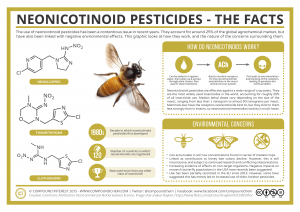

Birds
A decline in insectivorous farmland birds, correlated with neonicotinoid use, has also been seen in the Netherlands (Hallman et al 2014). This is thought to be due to directly consuming the poisonous seeds (Goulson, 2013) or through the reduction in their insect food source.

Do we need neonicotinoids anyway?
The use of neonicotinoids also appears to have no benefits to agricultural yields of soybean (Myers, 2014), Sunflower and Maize crops (Susuki, 2014). Methods like Integrated Pest Management can reduce the number of pests without the powerful chemicals so isn’t it time we put nature before ease?
More information on the effect on bees
References ![]()
Blacquiere T, Smagghe G, Van Gestel CAM, Mommaerts V. 2012. ` Neonicotinoids in bees: a review on concentrations, side-effects and risk assessment. Ecotoxicology 21:973–992
Brereton TM, Roy DB, Middlebrook I, Botham M, Warren M. 2011. The development of butterfly indicators in the United Kingdom and assessments in 2010. Journal of Insect Conservation 15:139–151
Cresswell JE. 2011. A meta-analysis of experiments testing the effects of a neonicotinoid insecticide (imidacloprid) on honey bees. Ecotoxicology 20:149–157
Defra. 2014. Pesticide usage statistics. Available at https://secure.fera.defra.gov.uk/pusstats/ (accessed March 2017).
Gilburn, A.S., Bunnefeld, N., Wilson, J.M., Botham, M.S., Brereton, T.M., Fox, R., and Goulson, D. (2015). Are neonicotinoid insecticides driving declines of widespread butterflies? PeerJ:e1402
Goulson, D. (2013). An overview of the environmental risk posed by neonicotinoid insecticides. J. Appl. Ecol. 50, 977-987
Hallmann CA, Foppen RPB, Van Turnhout CAM, De Kroon H, Jongejans E. 2014. Declines in insectivorous birds are associated with high neonicotinoid concentrations. Nature 511:341–343
Myers, C., Hill, E. (2014). Benefits of Neonicotinoid Seed Treatments to Soybean Production. US Environmental protection agency
Rundlof M, Andersson GKS, Bommarco R, Fries I, Hederstrom V, Jonsson O, Klatt BK, ¨ Pedersen TR, Yourstone J, Smith HG. 2015. Seed coating with a neonicotinoid insecticide negatively affects wild bees. Nature 521:77–80
Susuki, D. (2014). More Bad News for Bees. Available at http://www.ecology.com/2014/10/31/the-new-word-for-bees/ (accessed March 2017)
Word Count [487]
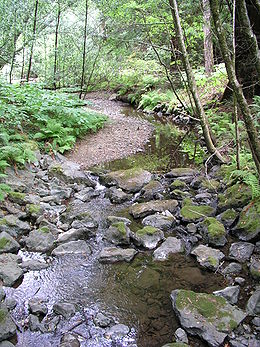
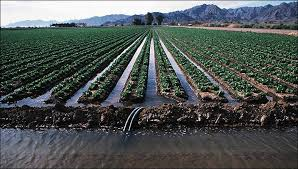
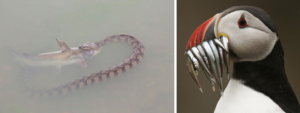
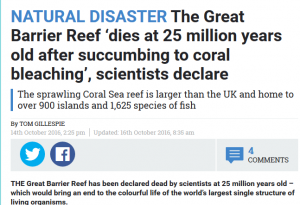
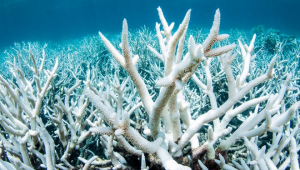
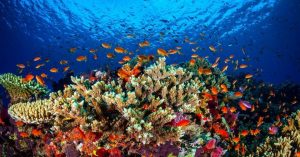
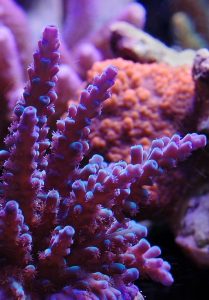
Recent Comments